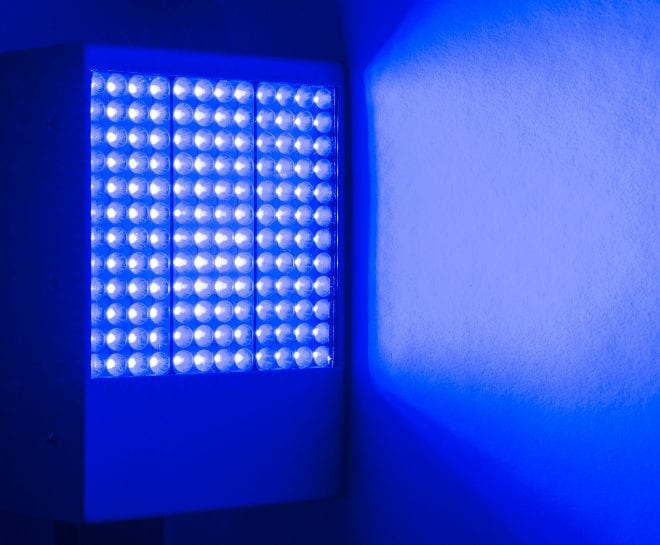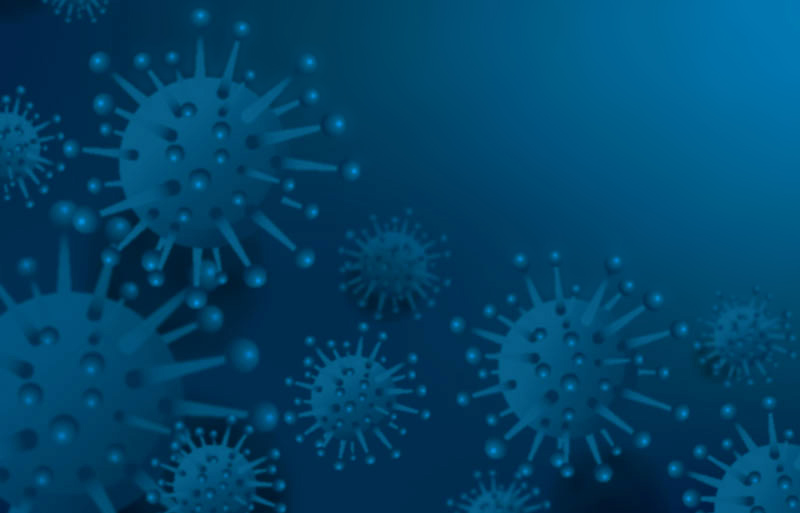UV Surface Disinfection Demystified: Recognizing the Scientific Research Behind the Remedy
UV Surface Disinfection Demystified: Recognizing the Scientific Research Behind the Remedy
Blog Article
Revealing the Advantages of UV Disinfection: Making Certain Clean and Disinfected Areas
In the age of heightened recognition bordering health and sanitation, the relevance of efficient disinfection methods can not be overstated. While traditional cleaning techniques have long been trusted, developments in modern technology have presented an innovative option that ensures clean and sanitized areas: UV sanitation. By harnessing the power of ultraviolet light, this technique has actually acquired acknowledgment for its ability to remove hazardous pathogens and give a thorough sanitization process. The benefits of UV sanitation extend far beyond its efficiency. This conversation will certainly discover the scientific research behind UV sanitation, its efficiency on different microorganisms, its applications in different setups, and the benefits it holds over typical techniques. Additionally, we will dive right into the security factors to consider that have to be thought about when carrying out UV disinfection. Prepare to reveal a new dimension of sanitation and discover the untapped possibility of UV sanitation.

The Science Behind UV Disinfection
UV disinfection is a clinically tried and tested approach that uses ultraviolet light to get rid of damaging microorganisms from surface areas and water. The science behind UV disinfection hinges on the capacity of UV-C light to damage the DNA and RNA of bacteria, providing them incapable to reproduce and creating their eventual death. UV-C light falls within the wavelength range of 200 to 280 nanometers, which is extremely efficient in ruining microorganisms, viruses, and various other pathogens.
When exposed to UV-C light, the genetic material of microorganisms takes in the energy from the light, bring about the formation of thymine dimers. These dimers interfere with the typical replication and transcription procedures of the bacteria, hindering their capacity to survive and recreate (uv surface disinfection). The DNA and RNA damage brought on by UV-C light is deadly to the microorganisms, making UV sanitation a reliable and dependable technique for eliminating a variety of virus
UV sanitation is especially useful in settings where conventional chemical disinfectants may be inadequate or not practical. It is a non-chemical method that does not leave any kind of residues or harmful byproducts, making it secure for usage in food handling, health care centers, water treatment plants, and various other markets. UV disinfection is eco friendly, as it does not contribute to the development of antibiotic-resistant germs or other damaging toxins.
Performance of UV Disinfection on Virus
The effectiveness of UV sanitation in eliminating microorganisms has been extensively researched and confirmed in numerous clinical studies. UV radiation has the capability to suspend a wide variety of bacteria, including germs, fungis, and infections, by damaging their DNA or RNA. This prevents them from replicating and triggering infections.
One research study released in the American Journal of Infection Control discovered that UV disinfection was efficient in lowering the presence of several drug-resistant germs in medical facility areas. Another research study performed by the National Institute for Occupational Safety and Health and wellness showed that UV sanitation had the ability to eliminate 99.9% of the influenza virus on surfaces.
UV sanitation has actually also revealed guarantee in combating the spread of healthcare-associated infections (HAIs) According to a research study released in The Lancet, making use of UV-C light in enhancement to common cleaning methods significantly lowered the incidence of HAIs in a health center setup.
Additionally, UV sanitation has actually proven to be effective against arising virus, such as the serious intense respiratory syndrome coronavirus 2 (SARS-CoV-2), which triggers COVID-19. A research study performed by the National Emerging Transmittable Diseases Laboratories demonstrated that UV-C light can suspend the virus on surfaces within secs.
Applications of UV Sanitation in Different Settings
With its proven performance in removing microorganisms, UV disinfection has actually discovered applications in a variety of setups. One of one of the most typical locations where UV disinfection is used is in health care centers. UV technology is utilized to disinfect individual spaces, running rooms, and various other high-touch surfaces, lowering the threat of healthcare-associated infections. In addition, UV disinfection is likewise being carried out in food handling plants and restaurants to ensure the safety of food products and prevent the spread of foodborne illnesses. UV disinfection is additionally valuable in water treatment plants, where it is used to kill harmful bacteria and supply safe drinking water.
An additional essential application of UV disinfection impends purification industry. UV air purifiers are utilized in domestic, business, and commercial setups to get rid of air-borne bacteria, infections, and mold spores. This technology is especially useful in atmospheres where go now people are more at risk to respiratory infections, such as healthcare facilities, institutions, and office buildings.
Furthermore, UV sanitation is significantly being used in public transport systems, such as buses and trains, to preserve he said tidy and sanitized areas for travelers. UV light is utilized to decontaminate surface areas and air inside the vehicles, lowering the risk of spreading out infectious illness.
Benefits of UV Sanitation Over Typical Approaches
In contrast to standard techniques, UV sanitation supplies a variety of distinctive advantages that make it a more suitable choice in various industries and setups. One considerable benefit is its performance against a broad variety of microorganisms, including bacteria, viruses, and fungi. Unlike chemical anti-bacterials that might have limited efficiency versus specific virus, UV disinfection is a non-selective process that can eliminate or inactivate a broad spectrum of dangerous microorganisms.
One more benefit of UV disinfection is its ability to provide reliable and fast disinfection. Traditional sanitation techniques frequently require longer contact times or multiple actions to achieve the preferred level of sanitation. In comparison, UV light can give continual and instant disinfection, reducing downtime and raising efficiency in different applications.
UV sanitation also supplies a secure and eco-friendly choice to typical sanitation methods. uv surface disinfection. Unlike chemical representatives, UV light does not leave any damaging deposits or by-products, making it ideal for usage in sensitive settings such as food processing facilities, medical care setups, and water treatment plants
Moreover, UV disinfection is a cost-effective service over time. While the ahead of time investment for UV sanitation systems might be more than conventional techniques, the functional expenses are generally reduced. UV lights have a long life expectancy and call for minimal upkeep, leading to decreased labor and substitute costs.
Security Factors To Consider for UV Sanitation
Thinking about the potential threats connected with UV disinfection, it is vital to address the safety factors to consider associated with executing this technology. UV sanitation makes use of ultraviolet light to eliminate or suspend microorganisms, making it an effective method for sanitizing various surface areas and objects. Nevertheless, it is vital to comprehend that UV radiation can likewise pose dangers to human health if correct precaution are not followed.
Primarily, direct exposure to UV radiation can cause harm to the skin and eyes. Extended exposure can cause sunburn, skin damages, and also an enhanced danger of establishing skin cancer. As a result, it is essential to make certain that UV disinfection systems are properly enclosed and furnished with safety features such as automated shut-off mechanisms or motion sensing units to avoid unexpected exposure.

In addition, proper training and education and learning are essential for those in charge of operating UV disinfection systems. They need to be aware of the potential hazards, recognize the safety protocols, and know just how to deal with and preserve the equipment properly.
Final Thought
In verdict, UV disinfection uses many advantages in making sure tidy and sterilized areas. Its effectiveness in removing virus has actually been verified via scientific research study. UV disinfection can be used in numerous settings, consisting of medical care centers, food processing plants, and water therapy systems. Compared to typical methods, UV disinfection has benefits such as faster sanitation times, marginal chemical usage, and no hazardous results. Security considerations should be considered to avoid potential threats connected with UV direct exposure.
UV sanitation is a clinically tried and tested technique that makes use of ultraviolet light to remove harmful bacteria from surfaces and water. The DNA and RNA damages triggered by UV-C light is dangerous to the bacteria, making UV disinfection a efficient and reputable method for eliminating a large variety of microorganisms.
An additional advantage of UV disinfection is its capability to give quick and effective disinfection. UV sanitation uses ultraviolet light to eliminate or inactivate microbes, making it a reliable approach for sterilizing numerous surfaces and items. Contrasted to standard techniques, UV sanitation has advantages such as faster disinfection times, very little chemical use, and no damaging byproducts.
Report this page